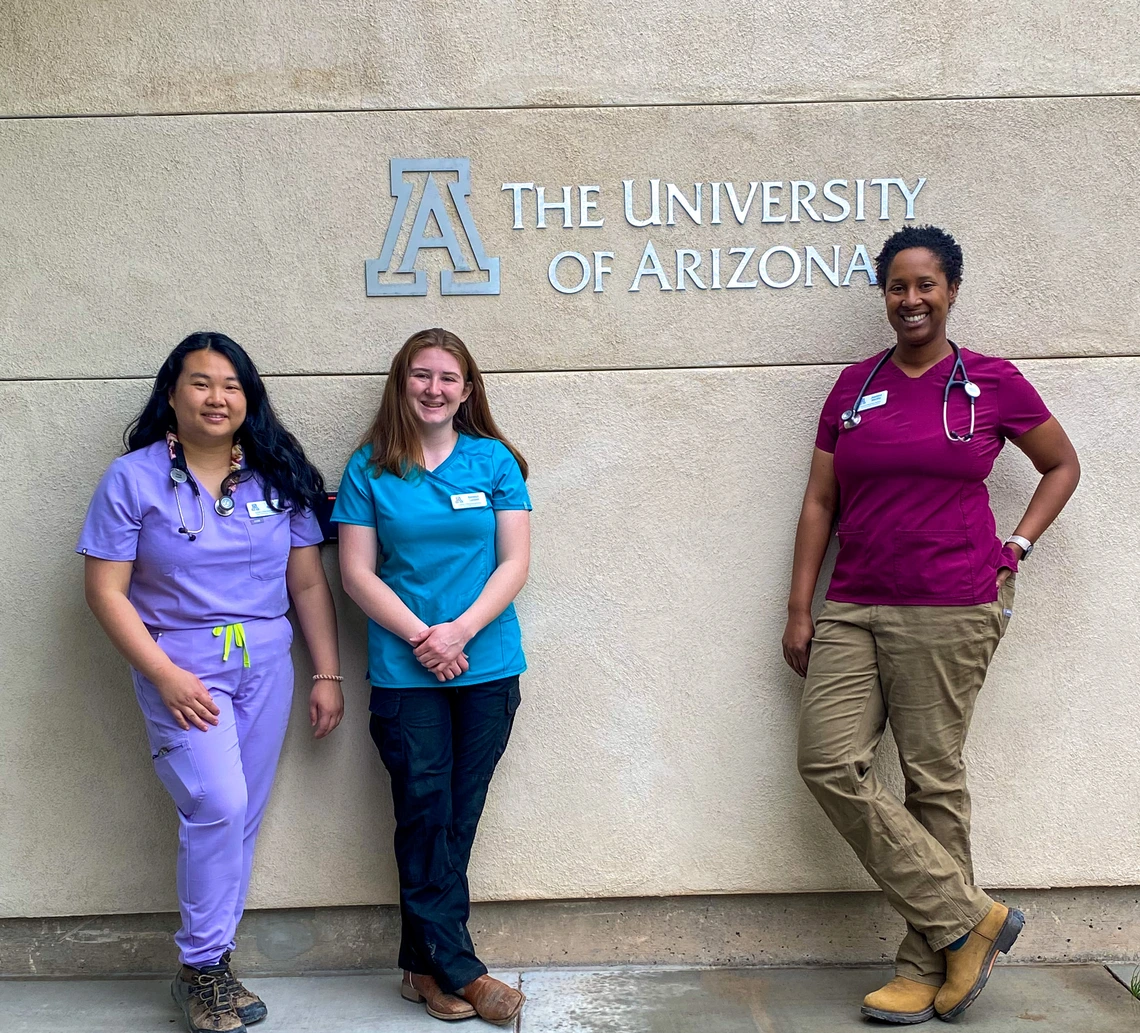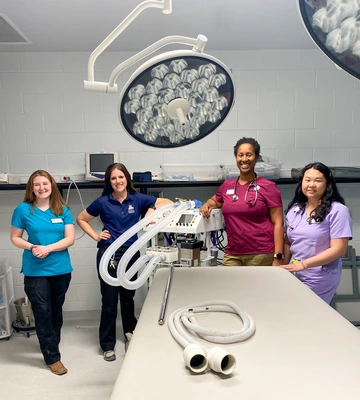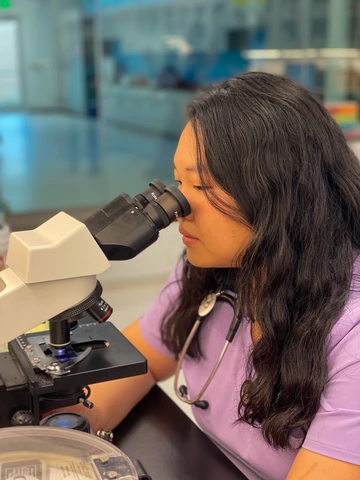An Insider's Look at a Zoological Medicine Clinical Site
Students undergoing their clinical year at the University of Arizona College of Veterinary Medicine have the unique opportunity to complete a rotation in zoo medicine under Dr. Alexis Roth at the AZA-accredited Reid Park Zoo in Tucson.

Students undergoing their clinical year at the University of Arizona College of Veterinary Medicine have the unique opportunity to complete a rotation in zoo medicine under Dr. Alexis Roth at the AZA-accredited Reid Park Zoo in Tucson. In their third and final year, our doctoral students gain vital clinical experience at various sites throughout our distributed clinical model. While students must complete rotations in various areas of veterinary medicine to develop core competencies, they may also choose rotations in specific areas of medicine. Individuals passionate about wildlife or exotic medicine can benefit from zoological medicine rotations like the one available at Reid Park Zoo. Employment opportunities in zoo medicine are highly competitive, so the more students participate in zoo medicine opportunities, the more attractive they become as internship applicants.

Kendall Larson, Dr. Alexis Roth, Jasmine Worthy, and Teng Gater pose in an operating room at Reid Park Zoo.
As our students undertake their third-year clinical journey, they gain the vital real-life experience they will carry into their professional roles after graduation. Students at Reid Park learn to take on a wide variety of animal needs, from everything from anteaters to squirrel monkeys to jaguars. Intrepid students with an interest in zoo medicine get to see exactly what a zoo veterinarian encounters daily and become prepared for future opportunities to work with wildlife. Life at Reid Park is never boring, says Dr. Roth. She shared, “The best thing about zoo medicine is that it’s never the same. Every day is something different.”
Although each day is different, students at this site learn essential aspects of zoo medicine and husbandry care. During this rotation, third-year students Teng Gater, Jasmine Worthy, and Kendall Larson rolled up their sleeves and worked alongside trained animal care staff, assisting with daily care and researching effective enrichment strategies for the zoo’s residents. Students learn about the importance of enrichment and the rigorous evaluations for safety and effectiveness that all items receive by the zoo’s veterinarian and by management. They then can select and implement approved items under animal care staff guidance. Enrichment, explains Dr. Roth, helps ensure animals’ well-being by giving them an outlet for their physical and mental energy. It is a novel addition to the enclosure that engages one of the animal’s five senses. Clinical year student Teng Gater set up a hidden feeder in the anteater enclosure, hiding it under rocks and foliage. As the anteater explores his habitat, he can use his powerful sense of smell and sharp claws to find and move the rocks and foliage aside to discover the hidden treats. This behavior mimics how anteaters find their food in the wild, helping him keep his senses sharp and his mind engaged. Third-year student Jasmine Worthy provided enrichment for the zoo’s curious squirrel monkeys. These animals navigate through branches and vines daily in their natural habitat, which is carefully mimicked in their home at Reid Park. On this day, Jasmine carefully attached hanging feeders to the tree branches. These fun feeders allow the animals to utilize their outstanding climbing and problem-solving abilities and senses to encounter a novel item. Another clinical year student, Kendall Larson, observed how the lions engaged with the enrichment in their enclosure, noting which enrichment they interacted with and how they behaved. These notes help the zoo track how well the enrichment items work for the animals.

In the learning center, students analyzed a blood sample using a microscope. Collecting and analyzing samples is an important part of the veterinary diagnostic process. Saving samples taken from the animals is common practice in case other zoos need assistance with diagnoses or determining normal baseline levels for a specific species. Much of the information used in zoo medicine is gained via experience or collaboration with other zoos instead of being available in an easy-reference compendium. For this reason, Dr. Roth conducts consulting work for zoos worldwide, offering her valuable experience and expertise to help other zoos discover answers to their animal-related queries. These cooperative efforts aid in enhancing zoo medicine globally. When Dr. Roth takes on new consultations, she asks the students to research the case for themselves, giving them real-life opportunities to uncover answers to the medical questions zoos face. After independently researching, students present their findings to Dr. Roth, and she analyzes their answers and provides expert feedback. Examining real cases helps students develop their problem-solving skills and increases overall knowledge.
On other days at Reid Park, students assist with administering vaccines, collecting samples, examining animals, and observing surgeries. Responsibilities like these vary daily, so the four-week rotation allows students to understand the ever-changing workflow inherent in zoo medicine. Wildcats who complete a rotation at Reid Park Zoo rely on their research skills and curiosity to discover the answers to the types of questions they would encounter on the job at a zoo. This experience helps students become more competitive for internships and enhances their resumes for future job searches. While each day is different, one thing remains the same: exploration and adaptation are essential.
